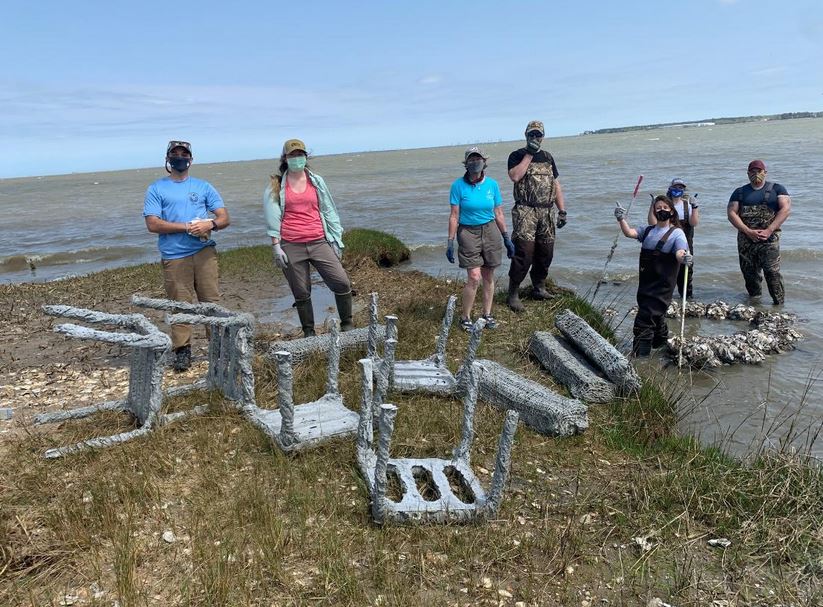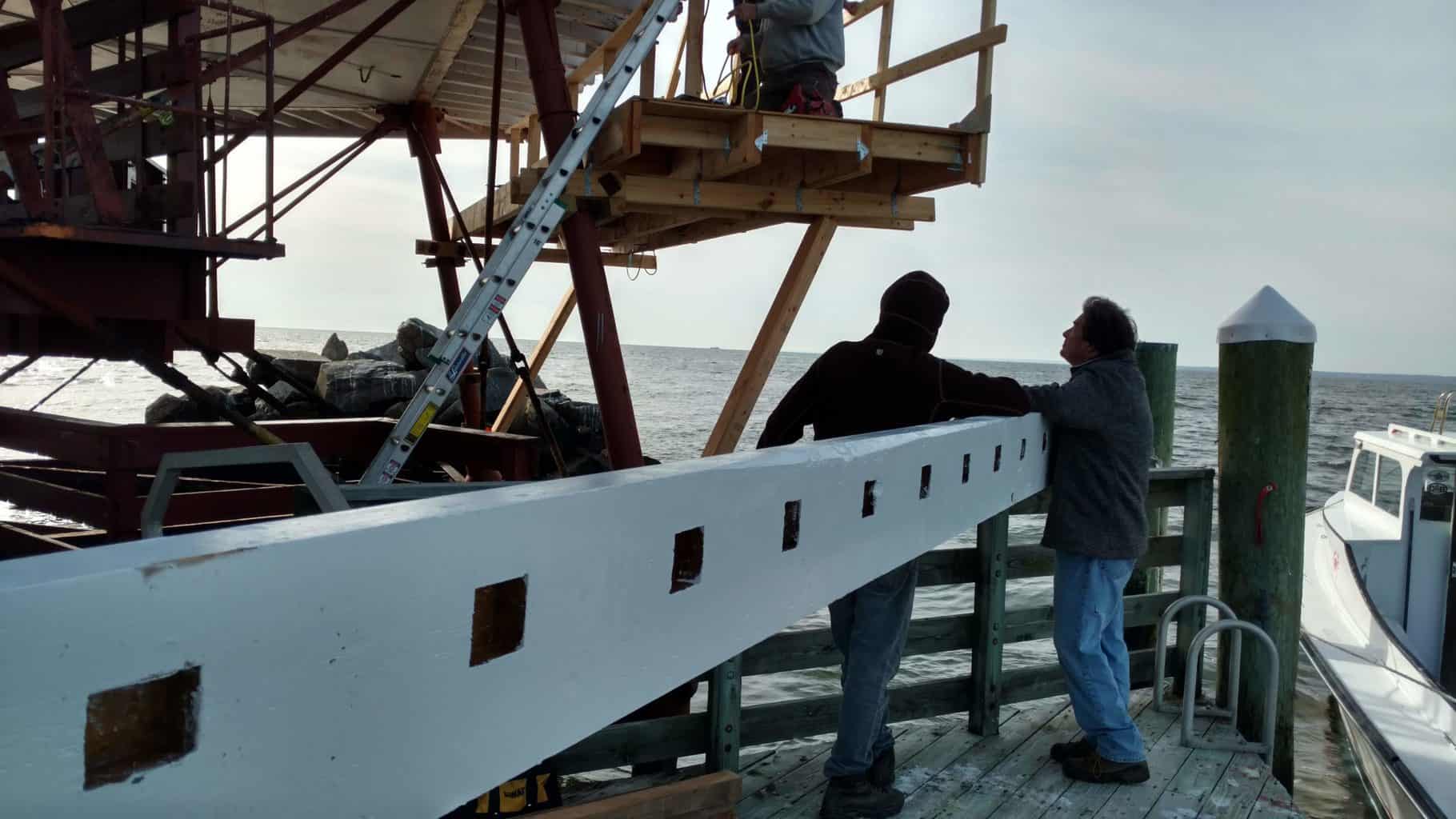Bulkheads and riprap are out. Living shorelines are in. Now, a partnership between the Nansemond River Preservation Alliance (NRPA) and the Chesapeake Bay Foundation (CBF) is testing some new components to see how well they work in living shoreline projects.
Bulkheads and riprap were the go-to shoreline stabilization methods for decades. But, they both have disadvantages. They don’t absorb wave energy. This can lead to scouring and actually more erosion. They don’t filter water coming off the land. They are unkind to most wildlife. On the other hand, living shorelines dissipate wave energy, filter runoff, and provide wildlife habitat. Virginia legislation now mandates living shorelines as the default in shoreline stabilization efforts.
While living shorelines obviously include vegetation, they also employ structures that help stabilize the shore. Concrete reef castles are common. But, concrete castles might not be the best alternative. According to Kati Grigsby, CBF Hampton Roads Program Assistant and Restoration Specialist, “The castles might not be the best choice in a muddy environment. Because of their weight, the castles can sink into the mud and loose effectiveness.”
That brings us to the new structures. One is called Natrx. It is a material that looks like concrete but is lighter, less expensive, and more environmentally friendly to produce. Natrx can be made in any shape. The Natrx structures being tested look a bit like a clump of stalagmites. The other new component is shaped more like a table. It is made of jute fiber that is dipped in concrete before being shaped into the table. Both of these originate in North Carolina. A few of these have been placed on the seaside of the Eastern Shore and in North Carolina, but they have never been really tested in Virginia. “We are studying these new structures beside more traditional structures like the castles,” said Grigsby.
CBF and NRPA are testing these new structures at a site on the Nansemond River in Suffolk, Virginia. At the test site, volunteers have deployed various combinations of the traditional components with the new using various patterns. The test site consists of five separate smaller plots, each with a different exposure to tides, wind, and waves. As time passes, those monitoring the project will be able to determine which components accumulate sand and soil, and which provides habitat for vegetation and wildlife. They will be checking for spat (baby oysters) to determine what surface the baby oysters prefer.
“We hope to determine which structures accumulate the most soil and accumulate the most spat,” said Grigsby. “Structures that accumulate soil can reduce the amount of backfill needed in many projects, saving time and money. Also, we are always looking for structures that are lightweight and volunteer friendly. Volunteers work on so many of our projects, so we need components that are not too heavy and can be easily managed by our volunteers.”
Early results are promising. Spat have already started to accumulate on some of the new surfaces. You can see more photographs of the project, and detailed plans for each test location at cbf.org.
-Kendall Osborne



